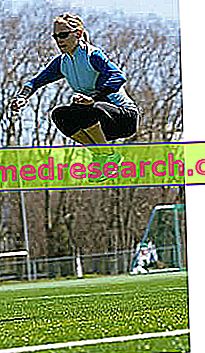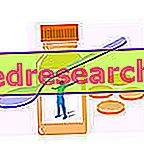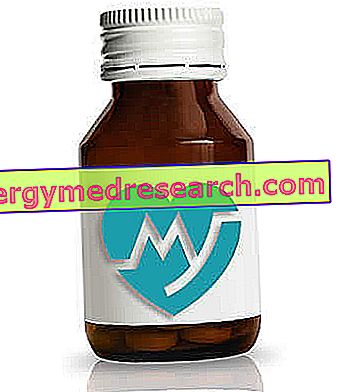Generality
When we talk about how to raise the pressure we refer to the different methods and treatments that can be put into practice to increase blood pressure when its values are lower than normal.

Arterial pressure is defined as low when, at rest, it falls below 90/60 mmHg. More properly defined as hypotension, low blood pressure can be a major distress for patients who suffer from it because of the symptoms it induces.
Depending on the severity of the disorder and the cause that triggered it, the remedies and treatments undertaken to raise the pressure may be different. During the article, they will be briefly analyzed.
Low pressure
What is Low Blood Pressure?
Before analyzing treatments, remedies and tips on how to raise the pressure, it may be helpful to do a quick review of what low blood pressure is, what symptoms it causes and what are its causes.
As mentioned, we speak of low arterial pressure when in a state of rest it falls below 90/60 mmHg .
Depending on the low pressure value it is possible to distinguish different levels of gravity:
- In case of low pressure lower than 90/60 mmHg but higher than 60/40 mmHg we speak of mild hypotension;
- In the presence of pressure lower than 60/40 mmHg but higher than 50/33 mmHg we speak of intermediate grade hypotension;
- In case of pressure lower than 50/33 mmHg, instead, we speak of severe hypotension.
In general, mild hypotension is asymptomatic and is not clinically significant. On the contrary, an intermediate or severe low pressure is symptomatic and generally hides pathological causes .
Nevertheless, low blood pressure should not be underestimated under any circumstances, even when mild. Therefore, in the presence of a blood pressure with lower than normal values, it is always good to ask for a doctor's consultation.
Low Pressure Induced Symptoms
Symptoms typically caused by low blood pressure include:
- General fatigue;
- dizziness;
- Confusion;
- Blurred vision;
- Irritability;
- Increased sweating.
Causes of Low Pressure
The causes of low pressure can be multiple and the treatments and remedies used to restore normal conditions depend on them. However, among the possible causes, we recall:
- Genetic predisposition;
- Physical activity;
- Dehydration;
- State of pregnancy (for more information, read: Low Pressure in Pregnancy);
- Taking some types of drugs (for example, diuretics, antidepressants, beta-blockers, calcium channel blockers, general anesthetics, etc.);
- Causes of pathological nature (cardiovascular diseases, bleeding, sepsis, anemia, mineral deficiencies, etc.);
- Environmental causes (for example, very hot places can cause a temporary drop in blood pressure).
Raise the Low Pressure
How to intervene to raise blood pressure values?
There are many interventions that can be carried out in order to raise the low blood pressure. They are closely related to the underlying cause of the lowering pressure in question and to the severity of the resulting hypotension.
The type of treatment to be undertaken must be established by the doctor, after having carried out a thorough examination and after having made a correct diagnosis regarding the causes triggering the disorder. It can be of a pharmacological type, as well as the adoption of a particular diet. Finally, remember that to increase the pressure, it is also possible to resort to some natural remedies, however, even in this case the consultation of the doctor should always be requested.
Pharmacological Treatments
How to raise the pressure with pharmacological treatments
The use of medical and pharmacological treatments to increase blood pressure is indicated mainly when one is faced with a pathological hypotension and / or when it is of intermediate or severe grade.
Clearly the use of drugs against low blood pressure can occur only if expressly indicated and prescribed by the doctor. However, to increase the pressure, the first-choice drugs are the so-called vasopressors.
Vasopressor drugs
The vasopressor drugs are formulated with active ingredients capable of promoting an increase in blood pressure. In fact, these drugs are endowed with a sympathomimetic action that favors the increase of blood pressure through the induction of arterial and / or venous vasoconstriction which can be associated with a positive inotropic effect . Among the active ingredients that fall into this class of drugs, we find:
- Ethylhephrine (Effortil®);
- The midodrine (Gutron®);
- Norepinephrine, used parenterally in case of hypotensive emergencies;
- Phenylephrine and ephedrine administered parenterally are indicated for the treatment of hypotension during spinal, epidural or general anesthesia.
Clearly, in the case where low blood pressure is the symptom of some underlying pathology, in addition to the aforementioned drugs, it is necessary to institute a suitable therapy aimed at resolving the cause causing the lowering of pressure.
Please note
If low blood pressure is caused by taking medication, you should inform your doctor without interrupting the current therapy. In fact, it will be this health figure who determines whether it is sufficient to reduce the dose of the drug administered or whether it is better to completely stop using it.
Supply
How to Raise the Pressure with the Right Feed
A little like what happens with hypertension, even when it comes to low blood pressure, nutrition and the diet adopted can play an important role.
In detail, those suffering from low blood pressure should avoid :
- To consume alcoholic beverages ;
- To make large meals ;
- Ketogenic diets ;
- Minimally mineralized water and diuretic drinks (for example, diuretic teas).
In contrast, individuals with hypotension should:
- Prefer the intake of non-alcoholic drinks, such as low mineral water and centrifuged fruit and vegetables, as long as they are free of diuretic action;
- Prefer the consumption of frequent but not very abundant meals ;
- Increase the consumption of foods containing iron (eggs, meat, offal, etc.), vitamin C (sweet and sour fruit, peppers, spinach, etc.), vitamin B12 and folic acid (sweet and acid fruit, legumes, liver, etc. .) in order to avoid the risk of a possible anemia.
Did you know that ...
Often, in the presence of low pressure, it is advisable to slightly increase the amount of salt used to flavor food, as long as it is absent in the diet. However, such advice raises doubts and conflicting opinions. The habit of using higher amounts of salt (even if slightly) than normal could, in fact, favor the establishment of habits that are not entirely healthy, predisposing to the onset of other health problems.
Natural remedies
How to Raise Pressure with Natural Remedies and Phytotherapy
The natural remedy par excellence for low blood pressure is without a doubt the licorice root. It is believed, in fact, that chewing natural licorice sticks can be a very useful remedy against lowering blood pressure. This effect is attributable to the glycyrrhizin present in the plant which - once metabolized - is able to exert an action similar to that of aldosterone, favoring an increase in blood pressure. In addition to licorice root sticks, in the market it is possible to find titled and standardized food supplements in glycyrrhizin.
Among the other natural remedies that can be used to raise the pressure, we remember:
- Caffeine : small doses of caffeine are able to exert a vasoconstrictor action that promotes an increase in blood pressure. On the contrary, high doses stimulate diuresis which, in turn, favors the opposite phenomenon, namely the lowering of pressure. Caffeine is contained in coffee, tea and guarana.
- Milk thistle: milk thistle contains tyramine, a particular amine able to stimulate catecholamine secretion with consequent increase in blood pressure.
- Ginseng and Eleutherococcus : these are plants with adaptogenic action, which means that they are able to increase the tone and defenses of the organism in a non-specific way. Therefore, these plants do not exert a direct action against low pressure, but can still provide some degree of support.
How to Raise Pressure with Homeopathy
Homeopathy also offers several possible remedies to counteract low blood pressure. These include:
- Cuprum metallicum (copper), Aurum metallicum (gold) and Argentum metallicum (silver): the association of these three remedies of mineral origin represents the homeopathic remedy par excellence against low pressure associated with fatigue.
- Ferrum metallicum (iron) and Phosphorus (phosphorus): these are two other remedies of mineral origin used to counteract the hypotension associated with fatigue and vertigo. Generally, they are used at the 5CH dilution.
- China officinalis : homeopathic remedy of vegetable origin, also used to counteract the lowering of blood pressure associated with vertigo.
- Veratrum and Camphora : plant-based remedies used when hypotension is associated with weak pulse.
- Acidium hydrocyanicum : homeopathic remedy of mineral origin used in case of lowering of the pressure associated with sweating and collapse.
Please note
Homeopathic remedies are products without approved therapeutic indications .
The practices described in this chapter are not accepted by medicine, they have not been subjected to experimental tests conducted with the scientific method or have not passed them. They could therefore be ineffective or even be harmful to health .
The information given is for illustrative purposes only. If in doubt, consult your doctor.
Useful Tips
Non Pharmacological Remedies and Useful Tips on How to Raise Pressure and Avoid Lowering
If low blood pressure occurs in a mild and asymptomatic form and is not caused by pathological conditions of any kind, to try to lower it could be useful:
- Wear elastic stockings in order to facilitate the venous return of blood to the heart;
- Maintain a good degree of hydration by increasing the water intake; dehydration, in fact, could favor the lowering of blood pressure;
- Avoid very hot places ;
- To practice a regular physical activity, in this way the blood circulation is stimulated favoring the stabilization of the pressure values. Clearly, it is necessary to hydrate in the correct way and, if you sweat a lot, integrate using special hydro-saline supplements.
For more information on How to Lower the Pressure, also read the dedicated article: Remedies for Low Blood Pressure.
However, despite the aforementioned advice and the possibility of resorting to the use of natural products, before undertaking any action to raise low blood pressure, it is always good to consult your doctor who will be able to identify exactly the cause of the blood pressure drop and provide guidance on the best treatment to follow.



